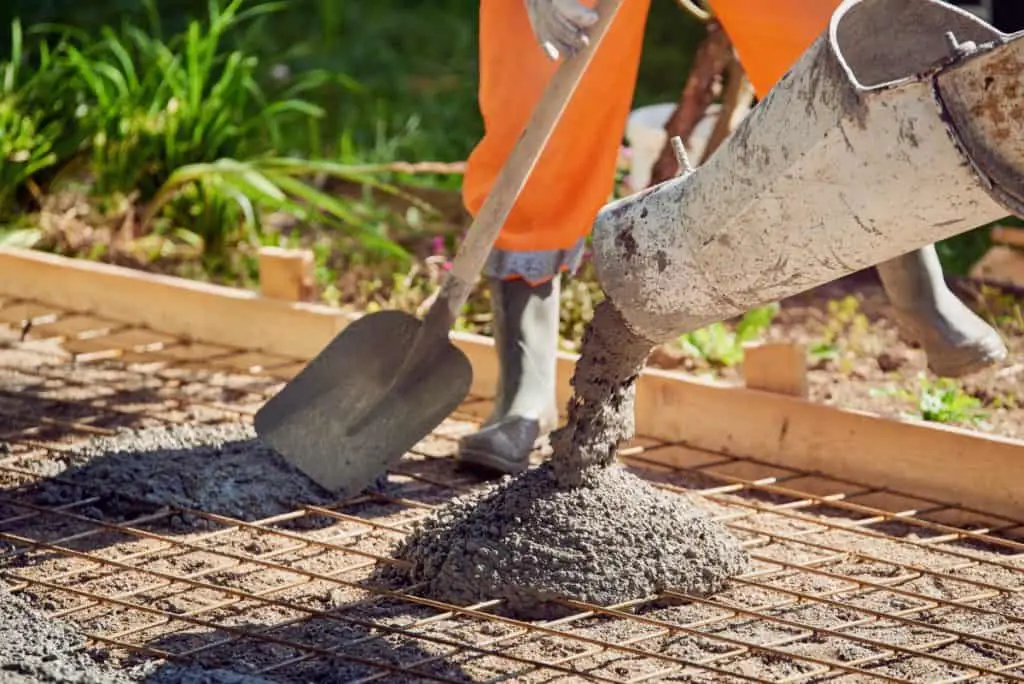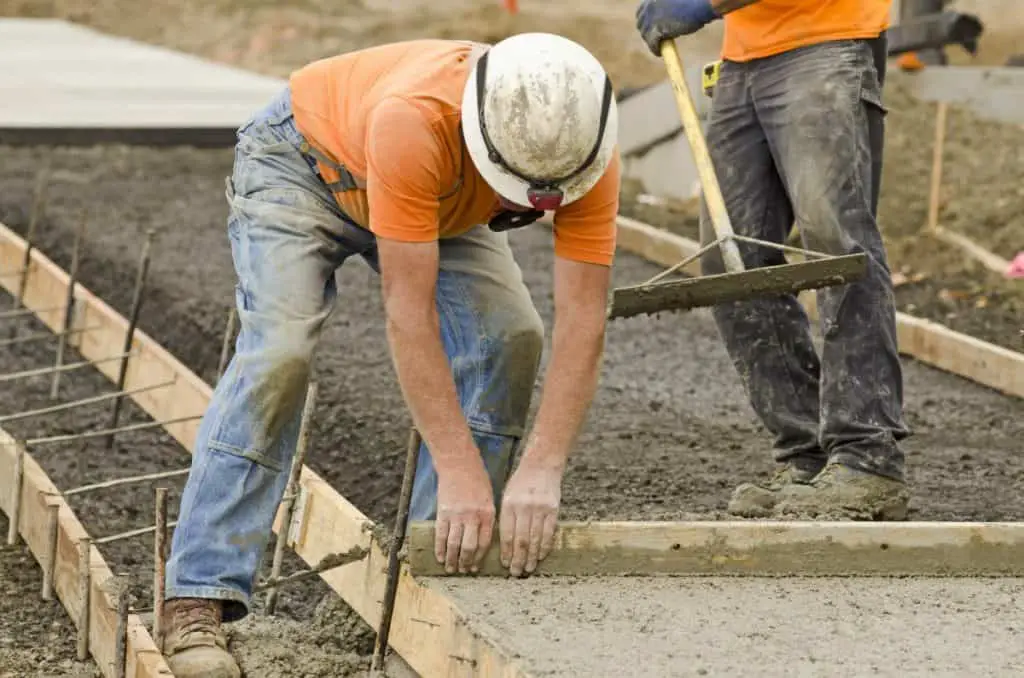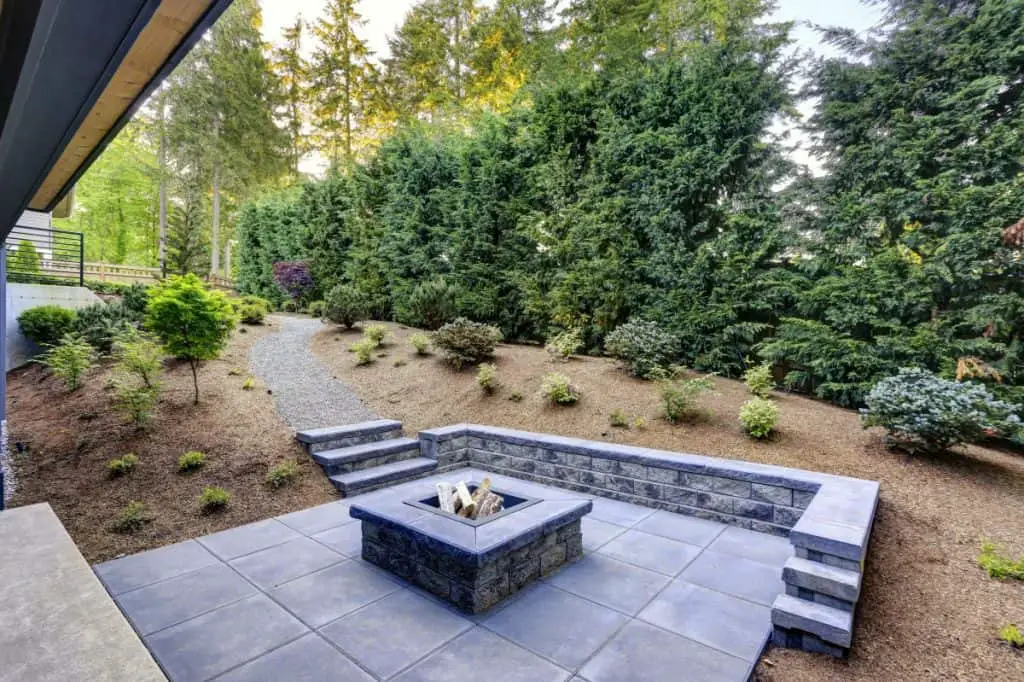Patios are a mainstay of many front and back yards, especially in the United States. They come in large and small sizes and can sometimes need to withstand a heavy load. If you’re looking to install a patio you’ll need correct and thorough planning so that you won’t have to correct any costly mistakes later on.
Build a patio with at least 4 inches of concrete. If the patio will need to hold a lot of weight, then the thickness should increase to 6 or 8 inches of concrete. Check with your local building code officer as different cities and towns may have different standards of thickness required for patios.
Understanding exactly how much concrete thickness you’ll need will come in the planning process of your project. Will this patio be for frequent gatherings with lots of people? Or are you the only one going to be using it? One way or another, there are many factors to consider so that you save yourself money, time, and effort.

Table of Contents
Codes & Standards Can Vary Depending on Location
Since concrete slabs are permanent structures, you may need to get permission from a city’s zoning or building department before you begin your project.
I spoke with Larry Beasley, the residential building inspector for Rexburg Idaho.
He stated that the minimum required thickness for patios is 4 inches according to the Rexburg city codes and standards. This is provided that it must have a base of at least 1 foot of gravel.
Depending on what city you live in, you’ll want to be sure of the codes and standards required.
Also, you could very well need a permit, depending on where you start your building. Visit your city’s main website and look for the residential building inspector in charge of determining the soundness of your buildings and construction projects.
4 inches seem to be standard in most cases though.
Related article: Should a Concrete Patio Be Flush With the Grass?
Pounds Per Square Inch (PSI) And Thickness
There’s a business called Walters Ready Mix in Rexburg. The dispatcher there told me that in terms of pounds per square inch, the bare minimum needed for a patio would be 3,000, though it would not look as good. Preferably, 4,000 psi is the best bet for patio.

Most concrete mix instructions require at least 4 inches of concrete to be poured on a solid base.
Most patios would not require more than 4,000 psi.
However, if there’s concern that the patio will need more reinforcement, then another option would be to install rebar to support the concrete. It’s always best to ask a concrete professional for help or guidance in these types of situations.
Excavation And Subbase
Most experts agree that, when you begin your concrete project, you should excavate the area where you want to lay the patio, digging out at least 8 inches of soil.
The ground should be graded and measured with a leveler so that it is as flat and level as possible.
Gravel is an excellent subbase for patios, and experts suggest between 2 inches to 1 foot of gravel (or other aggregates like sand and limestone) that are packed down tight and level.
Doing this will prevent your patio from cracking or shifting in the future. It also allows water to drain into the soil beneath.
Also Read: Why Does Concrete Crack? (There are actually multiple causes)
If your base is done well, you won’t need to pour more than 4 inches of concrete at 4,000 psi.
Outline, Form, and Reinforcement

Before you begin pouring the concrete, make sure that you mark the outlines of your patio. Many experts drive stakes into the ground along the edges and corners of the patio.
Make sure there are about 2 feet between each stake.
Next, lay down and nail the concrete forms in place. The form can be anything, but typically for small projects, experts use straight wooden beams or boards.
This is where the measurement determines the thickness of your cement. The form edges must be the correct height (at least 4 inches) so that when you pour in the concrete, it will have that same thickness.
Read more: Laying Out Concrete Forms: 10 steps for doing it right
Different concrete forms can be used to form the concrete into any shape or size you want. This guide assumes you’re building a patio in a perfect square (i.e. 10′ x 10′).
In some cases, you might want to reinforce the concrete with mesh. These can be found at stores like The Home Depot and are installed on wire supports.
These lie across the patio area raised slightly above the ground so that when you pour the concrete, it will sit in the middle of its thickness.
Mixing The Concrete
The strength and durability of your concrete will depend largely on when and how you mix the concrete.
Here is a list of factors to take into account as you prepare for your concrete project:
- Type of concrete: Look at the type of grade it is; whether it’s designed for the kind of project you’re working on.
- Compressive strength: The pounds per square inch (psi) the concrete offers once it has cured.
- Water per pound of mix: Most concrete mixes come in bags with different weights. Mixing in too much water per pound will weaken the concrete and too little water will make it nearly impossible to work with.
Pouring The Right Concrete Thickness
Experts recommend more than one person helping during this process. Make sure to take extra precautions during this such as wearing gloves, goggles, and other protective gear. Wet concrete can actually burn your skin.

Before pouring the concrete, make sure to dampen the gravel first. The concrete needs to be damp and remain damp as it cures.
If you’re using a wheelbarrow, normally one person will tip the wheelbarrow and begin placing the concrete in the corner of the patio area while a second helper will shovel concrete out and spread it.
You can build a temporary walkway across the cement if you lay a board on top and across the corner of the forms. That way you can walk on top of the cement, shovel concrete where it needs to be, and grade it until its level.
You may need to shovel excess concrete away at this time so that the thickness remains consistent throughout.
By now, the thickness of your concrete should be at least 4 inches.
As the concrete cures, water will form on its surface. You can cover it with plastic to trap water inside while the chemical reactions in the concrete cause it to harden.
Read more: Do You Need to Keep Concrete Wet During the Curing Process?
You can remove the form boards after 48 hours, and it will take about a month or so for the concrete to cure to its highest compressive strength.
Do you need a more in-depth guide to pouring concrete? Read our guide: How To Pour a Concrete Slab: The Ultimate DIY Guide.



